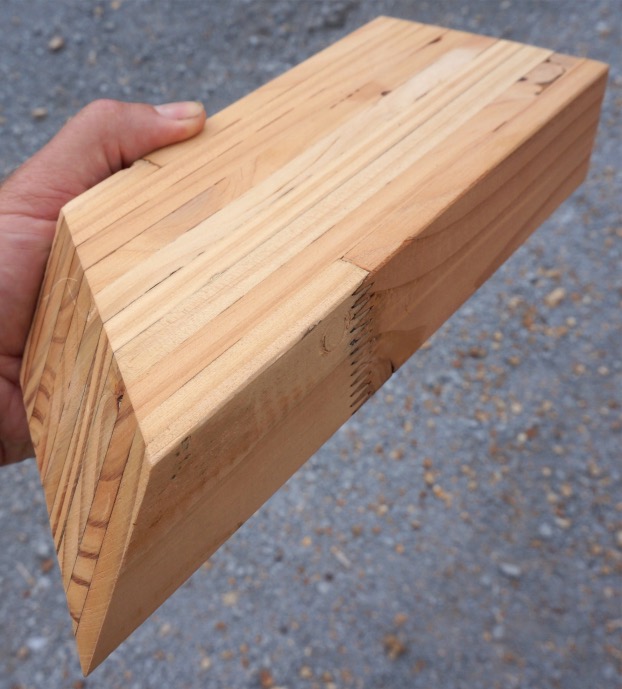Optimised Engineered Lumber (OEL), timber framing for the future?
The Specialty Wood Products Partnership is a seven year partnership between central government and the forest industry. It aims to investigate the development of new wood products from locally grown specialty timber species. Research is aimed at identifying new processing options for Eucalypts, Douglas-Fir, and Cypresses, in order to produce high-value timber products. The New Zealand Farm Forestry Association and Farm Forestry Timbers are a partner and our expectation is for high-quality science to be applied to industry problems to generate real opportunities for our forest industry.

One of the early opportunities being explored in this programme is testing young small diameter Douglas fir and Eucalyptus nitens in the manufacture of OEL™. Wood from younger trees usually results in lower strength structural products, but this novel approach uses a lamination process to produce a high stiffness structural product with high dimensional stability.
OEL™ is made from thin strips of wood that are finger-jointed and laminated together. By laminating wood the stiffness and strength is dramatically improved and the product has very consistent properties, allowing the use of low quality and small diameter logs that would otherwise yield very little value, for a high quality structural product.
The key question is "Can this be produced cost-effectively?" The SWP doesn't yet have an answer to that, but has demonstrated that strength and stiffness characteristics are very good from both young Douglas fir thinnings and Eucalyptus nitens. In particular the E. nitens showed excellent stiffness properties, and being very fast growing might hold real potential as a plantation species for structural applications. Douglas fir could also potentially be grown in shorter rotations, improving the economics of the species.
The OEL™ technology is patented and the first modular plant is being constructed near Gisborne to process lower quality radiata pine logs. The opportunity I see for other species is to achieve better product prices based on their superior stiffness properties. It would be great for our "alternative" timbers to be valued based on their inherent properties rather than devalued because they are not mainstream. I look forward to more results from the SWP as they become available
Dean Satchell 21/2/2017
WET OEL 2016 from Wood Engineering Technology on Vimeo.
Disclaimer: While every effort is made to ensure the accuracy of the information provided on this site, Farm Forestry Timbers Society do not accept liability for any consequences arising from reliance on the information published. If readers have any doubts about acting on any articles they should seek confirming, professional advice.
 Farm Forestry New Zealand
Farm Forestry New Zealand Farm Forestry Timbers - Headlines
Farm Forestry Timbers - Headlines
2 posts.
Post from Stephen Yeats on February 23, 2017 at 1:32PM
Post from Dean Satchell on July 31, 2017 at 9:08PM
Add a post